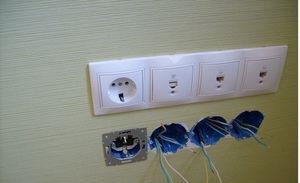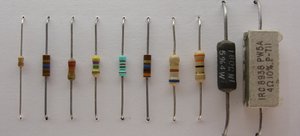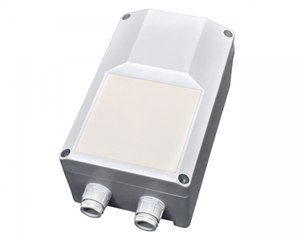Stepper drive motors: varieties, Specifications, features and principle of operation
That this or that electric device worked, it needs a special drive mechanism. One such mechanism is the stepper motor. In this article you will learn, what he is, what is the principle of its work and into what categories it is divided.
What is the stepper motor?
The stepper motor can be unipolar or bipolar. It is an electric and brushless DC motor, able to divide the total turnover into several equal steps. It includes the following details:
-
special controller for stepper drive;
- magnetic parts;
- windings;
- dashboard (it also acts as a control unit);
- transmitters;
- alarms.
The stepper motor is used mainly for the following purposes:
- work of the milling machine;
- work of the grinding machine;
- provides operation of various household appliances;
- work of production mechanical means;
- ensures the operation of transport.
The principle of operation of the drive
The principle of operation of this drive is as follows. When applying voltage to the terminals, the brushes on the stepper motor itself begin to move constantly. Idling engine has a unique property: it converts input pulses, having a predominantly rectangular orientation, in a predetermined position of the attached drive shaft.
Each of the input pulses is able to move the shaft at a certain angle. Devices, which are equipped with a similar reducer, have the maximum efficiency in the presence of several gear electromagnets, which are located around the central iron bar, which has a toothed shape. The external control circuit excites the electromagnet. If necessary, turn the motor shaft, that electromagnet, to which energy is applied, attracts the teeth of the wheel. When they are aligned with the electromagnet, they are offset relative to the subsequent magnetic part of the motor.
The first electromagnet turns off, and then the second is turned on, after which the gear begins to rotate, aligning with the previous wheel. Then this action is repeated the required number of times. Each of these rotations is called a constant step, the speed of rotation of the stepper motor can be calculated by counting the number of steps, required for its full circulation.
A special driver is used to control the operation of the stepper motor. This is necessary in those cases, if you adjust the drive to operate the machine or use it to start the wind turbine.
Types of stepper motors
Stepper motors are divided into the following types:
- with the presence of a permanent magnet;
- synchronous hybrid drive;
- replaceable engine.
They are all different from each other, including the principles of their work.
So, example, drives with permanent magnets are equipped with a special magnetic part in the rotor. Such motors operate on the principle of gravity or repulsion by the stator and rotor of the motor based on the electromagnet.
The replaceable engine has a conventional iron rotor and its operation is built on the principle of fundamentality. When a minimum level of repulsion with the smallest clearance is allowed, the rotor points are attracted to the stator poles.
But the hybrid drive can combine both principles of operation, it is considered the most expensive model of stepper motors.
Two-phase stepper motors
The two-phase motor is very simple, it can be installed by a person without special experience. Regardless, you collected it yourself or bought it ready-made, it has two types of windings for coils:
- unipolar;
- bipolar.
If the stepper motor has one winding with a central magnetic tap, affecting each phase, then it is a unipolar drive. Each winding section should be included in order to ensure the desired direction of the magnetic field. In this drive, the magnetic pole is able to operate without the need for additional switching, therefore, the direction of current and circuit switching are very simple, using one transistor per winding. This takes into account phase switching:
- three wires per phase;
- six on the output signal.
The drive motor microcontroller can be used to activate the transistor in a particular sequence.
And the windings can also be connected by touching the connection wires together with the permanent magnets of the drive. When connecting the coil terminals, it will be difficult to turn the shaft. The resistance between the coil end and the common wire is equal to half the resistance of the coil and wire ends. It looks like this, because the common wire is longer, than half the part, which is used to connect the coils.
Bipolar stepper motors have one phase winding, in which the current enters in a critical way using a magnetic pole. The control system in this case will be complicated with the use of a connecting bridge. There are two wires available for the phase, but they are not common. When mixing the signal of the stepper motor at high frequencies, the friction effect of the system can be reduced.
in addition, another type of stepper motor is three-phase, but its scope is very narrow:
- when working with CNC milling machines;
- on some cars, where a throttle is used;
- on the drive and printers of some brands.
Jet stepper motors: features and principle of operation
It should be noted, that active step drives have a major drawback: this is a big step, reaching several tens of degrees. Unlike them, jet stepper motors are able to reduce the rotor frequency, due to which the step becomes angular less than degrees.
The main feature of the jet drive is that, that the teeth are placed on the stator poles. The synchronizing moment in it is provided by a difference of magnetic resistances on a cross and longitudinal axis of the drive.
The jet stepper engine has one key drawback: it lacks a synchronizing moment, if the stator windings are de-energized.
Increase the degree of engine reduction, and regardless of which active or reactive, it is possible at use of multipack designs, when the stator teeth are shifted on each other on the part of the separation, and the rotor of each package does not shift and their pole axes are the same. This design is very complex in terms of creation and is not cheap in the finished form, it also requires a complex switch.
To date, on sale you can find a huge number of all kinds of engine designs, which differ in such parameters, as:
- number of phases;
- type of winding placement;
- ways to fix the rotor, etc.. d.
In inductor stepper motors, the torque is created by the interaction of the magnetic field, which is created by stator windings and a permanent magnet, available in the toothed part of the gap.
The synchronizing torque in the inductor motor is itself reactive, thanks to which the stator winding turns out, and a permanent magnet is able to create a moment of fixation, due to which the rotor is kept in the right position in the absence of current.
Unlike a stepper jet engine, inductor, at a similar step, has a higher synchronization torque, as well as better technical characteristics.
Synchronous linear stepper motors
In order to automate some production processes at the enterprise, sometimes it is necessary to move objects in the plane. To do this, you need to use a special converter of rotational motion in translational, which is achieved through the use of kinematics.
With the help of linear stepper motors, you can convert a pulse command directly into a linear movement, which will greatly simplify the kinematic scheme of all kinds of electric drives.
The stator in this drive is presented in the form of a soft magnetic plate, and the wires are magnetized by a permanent magnet.
Toothed separation in the stator and the moving part are the same, they can be shifted by half the division within one rotor wire. The magnetizing flux and its magnetic resistance, in this case, do not depend on it, where is the moving part of the engine.
To move an object in a plane according to two coordinates, two-coordinate type engines are used.
Magnetic air suspension is also used in linear motors. Due to the force of magnetic gravity, the rotor is attracted to the stator. Next, compressed air is injected under the rotor through the nozzles, resulting in strength, repulsive rotor from the stator. So between them there is an air cushion and the rotor hangs over the stator with a minimum gap. This provides a minimum of rotor resistance and high-precision positioning.
In what modes the synchronous stepper motor can work?
The drive is able to work stably in the absence of loss of steps during the development of the angle when applied to the control windings of the pulse series. During each step, the rotor has a confident equilibrium with respect to the vector of magnetic induction, relating to the stator magnetic field.
The mode of each step must correspond to the number of control pulses, which are fed to the drive windings, and he at the same time, until the arrival of the next pulse, must work out the angle of rotation set to it. At the beginning of each step, the angular velocity must be zero.
Oscillations of an angular drive shaft concerning constant value are allowed. They are due to the presence of kinetic energy, which accumulates in the drive shaft during testing of the angle. In this case, energy can be converted into losses:
- magnetic;
- mechanical;
- electric.
The larger their size, the faster the process of transition to the practice of one step drive.
When starting, the rotor may lag behind the stator flow by a step or more, resulting in a discrepancy between the number of rotor steps and stator flow.
The key characteristics of a stepper motor are:
- step;
- ultimate mechanical characteristics;
- receptivity.
The limiting characteristic is the dependence of the maximum possible synchronizing torque on the frequency of the control pulses.
And the frequency of these pulses is called capacity, which eliminates the possibility of loss or additions to the step during processing. Acceptance is considered a key indicator of the mode of transition in the engine. It is able to grow together with the synchronizing moment, decreasing step, inertial moment linearly moving or rotating particles, as well as the static moment of resistance.
Features of connection of the stepper motor
You can connect a stepper motor according to one or another scheme, which depends on the number of wires and starting methods.
Motors can have from four to eight wires. If there are only four of them, then the use of the motor is possible only with a bipolar device. Skin phase wrapping, of which only two, equipped with two wires. Lead pairs should be determined using a meter, then the driver is connected step by step.
Motor, equipped with six wires, includes two wires for each winding and a central tap, also for each of them. It can be connected to unipolar, and to a bipolar device. A special measuring device must be used to separate the drive. The unipolar drive of the device can be connected using all six wires, and to unipolar will be enough one end and one central valve from each winding.
The five-wire motor is almost the same as the previous one, but, its central terminals are internally connected by a single cable and have one outlet to one of the wires. The windings should not be separated from each other, otherwise they can be broken. Instead, it is better to determine the center of the wire and connect it to other conductors, this will be the most efficient connection solution. After that, you can connect the device and check it for functionality.
Key technical characteristics of engines
The primary winding at DC creates a rated voltage. And the initial speed of the drive torque changes with the current. From that, what is the circuit of the motor and the inductance of its windings depends on the time of reduction of the linear torque at higher speeds. Some brands of engines, having a degree of protection IP65, able to work in the most difficult conditions.
If you want to choose a ready-made model of a stepper motor of domestic production, pay attention to the main technical characteristics of the most famous models:
- KD-1 - the degree of the step is equal to 15, 4 phases, torque is 40 Nt;
- Mon.-0,04 A - degree of step 22,5, 4 phases, torque 100 Nt;
- DSHM 200 - degree of step 1,8, 4 phases, torque 0,25 Nt;
- LH-6 - step degree - 18, 4 phases, torque 2300 Nt.
Such models are also in demand among buyers, as:
- four-phase DShR-40;
- SM-200-0.22;
- Purelogic RD with encoder;
- NO 23;
- STH-39D1112;
- SP-57;
- SanyoDenkiSM28.
When selecting the right engine, it is necessary to calculate the power parameters, voltage and torque.
One of the problems of the stepper motor is the control of devices in the absence of a controller. To deal with it, you need to take a special block of logical communication, which helps to control the engine in the absence of a suitable chip. But, it is best to control the operation of stepper motors with a special controller.
The average cost of a stepper drive in large cities in Russia and Ukraine
The cost of this device directly depends on such indicators, as:
-
engine type;
- design power;
- appointment.
The average cost of a unipolar stepper motor is:
- Moscow - 3000 cu;
- St. Petersburg - 3500.;
- Kyiv - 3500.e.;
- Kharkiv - 4000 BC.
so, we told, what is a stepper motor, on what principle it works, into what categories it is divided and what properties it differs. We hope so, that it will make your choice easier if you need to purchase this device.



